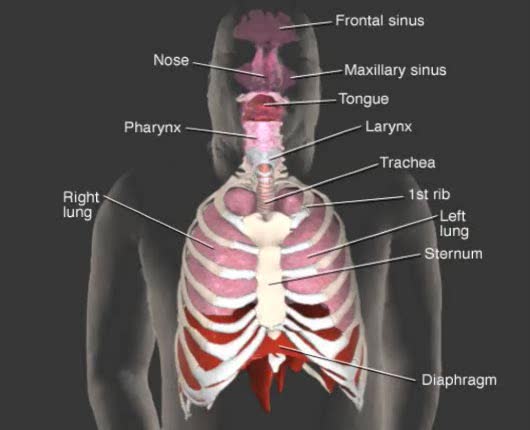Methods of carbon dioxide transport - carbaminohemoglobin and bicarbonate ions
By: HWC
Date Uploaded: 10/31/2019
Tags: homeworkclinic.com Homework Clinic HWC Carbon dioxide transport bicarbonate ions dissolved gas plasma carbaminohemoglobin pulmonary capillaries alveolar air space metabolically active cells
• Carbon dioxide is transported three ways: • As bicarbonate ions in the plasma. • Bound to hemoglobin. • As a dissolved gas in the plasma. • A small percent of carbon dioxide is transported as a dissolved gas. • Some of the carbon dioxide is bound to hemoglobin, in the form of carbaminohemoglobin. • Carbaminohemoglobin is formed near metabolically active cells. CO2 + Hb ---) Hb-CO2 • At the lungs, CO2 dissociates from carbaminohemoglobin. Hb-CO2 ----) Hb + CO2 • Carbon dioxide diffuses out of the blood cell, into the plasma in the pulmonary capillaries and then enters the alveolar air space. • Most of the carbon dioxide is carried in the form of bicarbonate ions in the plasma. • Carbon dioxide, produced by metabolically active cells, diffuses into the red blood cell where it is converted to bicarbonate ion. CA CO2 + H20 ---) H2CO3 ---) HCO3- + H+. • As levels of carbon dioxide increase, the production of bicarbonate ions increases. • The bicarbonate ions diffuse out of the RBC into the plasma. • Negatively charged chloride ions move into the cell to balance the movement of the negatively charged bicarbonate ions out of the cell. This chloride shift maintains the electrical balance in the red blood cell. • Near the alveoli, CO2 is generated (with a reduction of the amount of bicarbonate). CA HCO3- + H+ ---) H2CO3 ----) H2O + CO2 • The carbon dioxide that is produced diffuses into the alveolus for removal from the body.
Add To
You must login to add videos to your playlists.
Advertisement












Comments
0 Comments total
Sign In to post comments.
No comments have been posted for this video yet.